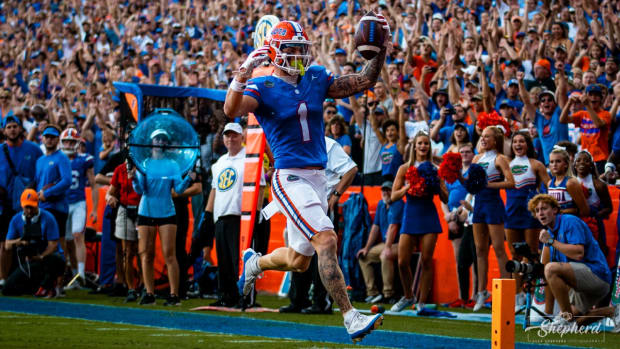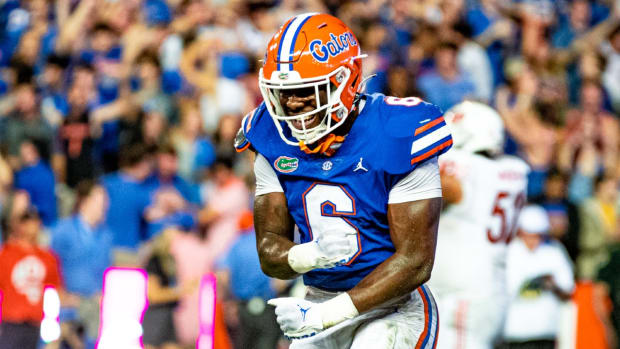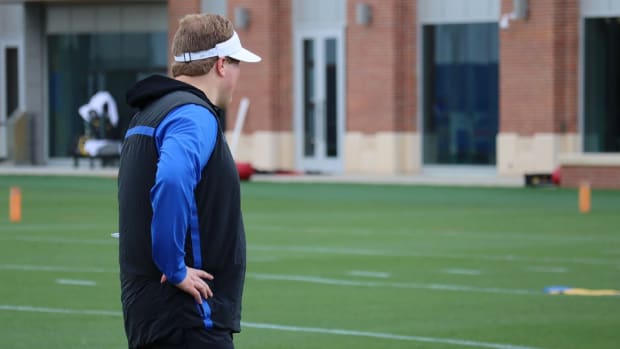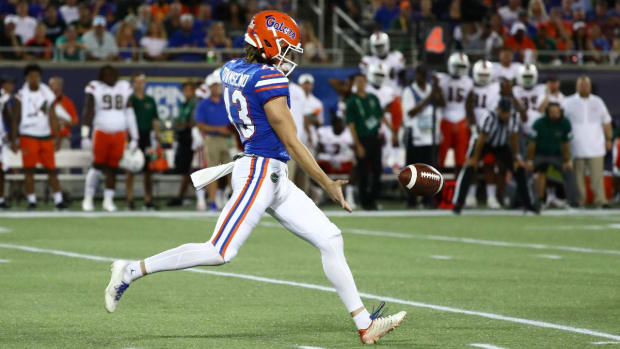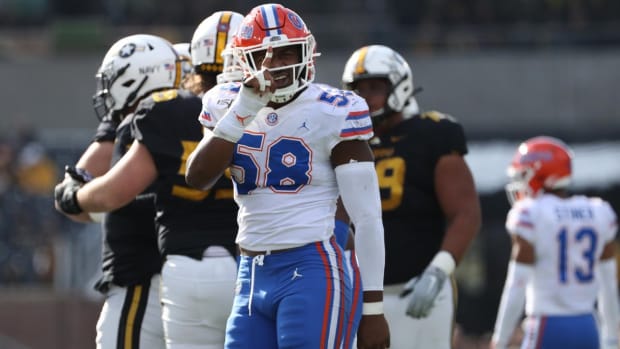2020 Florida Gators Season In Review: Running Backs
The lost amongst the found.
As we pump the brakes to look in the rearview mirror of each position group in 2020, the running back room was one that fell irrelevant in an air-centric offense.
In the midst of an unprecedented season all the way around, the Gators employed one of the most dynamic offenses in the nation. Averaging 39.8 points and 509.8 yards per game, Florida was virtually unstoppable for opposing defenses throughout the longevity of the season.
However, that high-octane attack came via the Gators explosive passing game, led by the Heisman finalist quarterback Kyle Trask.
As a result, the Florida rushing game played an insignificant role in the offense during 2020, concluding in the inefficient usage of the running backs.
Undergoing a complete turnaround from 2018— when the rushing game played a major role in offensive production—in the past two seasons, Florida has looked for replacements to fill the void created when the two-headed monster of Jordan Scarlett and Lamichal Perine was split up.
In 2019, Perine saw little success as the bell cow back due to the inexperience of an offensive line undergoing tremendous amounts of overhaul but still found moments to shine throughout the year despite stagnancy at points.
Coming into this season, many expected a re-emergence of the group due to the experience the offensive line had gained last season. However, that was not the case, and Florida remained at a similar pace in the rushing department to last season.
Averaging just 131.25 yards per game this season—compared to 130 in 2019—the difference in production was minute.
Led by Dameon Pierce with 106 carries, the 5-foot-10, 215-pound back accounted for 503 yards—averaging 4.7 yards per carry—and four touchdowns on the year. Coming into the season, Pierce was expected to carry a large load for the unit due to the departure of Perine but was subject to running back by committee.
Despite showing upside as a consistent back last season, the schematical focus on throwing the football caused him to split snaps with multiple other running backs throughout the year, limiting his impact.
In the points he saw action last season, the junior from Bainbridge (Ga.) consistently showed upside with his physicality, making him a viable option in short-yardage situations.
However, Pierce was noticeably underutilized in that department—and as a whole—throughout the season, with his counterpart Malik Davis recording a share of short down and distance touches.
Davis—who had 66 carries and 310 yards on the ground paired with 31 receptions for 377 yards—failed to reach the end zone at any point this past season. Leaving the decision not to employ Pierce in those situations to be head-scratchers (even more so than they already would have been.)
The main factors for the unit remained to be a lack of consistency from both a production and play-calling standpoint. While the offensive line saw its fair share of struggles—especially along the right side—the unit isn’t all to blame for the ground game's issues.
In fact, the lack of rushing presence was a side effect of the uber-talented passing game Florida sported being the focal point of the offense.
As a result, the running backs of UF were nearly set up to fail at points. How can a unit that had been called upon only a handful of times through three quarters—with the carries being split by two to three guys—be expected to carry a heavy workload with diligence to close out the contest if they haven’t had consistent reps to stay warm throughout the game?
The answer: They can’t. And they didn’t.
Where 2019 and 2020 differed was where explosive plays in the run game were concerned. The longest rush by a running back was a 39-yard carry by Davis against LSU this past season.
In 2019, long runs were apart of the norm for Florida’s victories. With notable breakaways against Auburn, South Carolina, and Virginia, the 2019 rushing game held something that 2020 failed to find.
The highlight of the Florida season for the group came with a monstrous contest against Georgia in Jacksonville. A must-win game for the SEC East crown, Florida drew up a series of wheel routes to expose UGA along the sidelines in the absence of Richard Lecounte in the backend.
Once again struggling on the ground, totaling just 88 yards on 29 carries as a unit, the running back group gouged the Bulldogs defense through the air, combining for 10 receptions and 212 yards in the day.
Playing a major role for Florida in the performance, with three catches and 71 yards of his own, third-string back Nay’Quan Wright was a bright spot of an otherwise lackluster group. Equipped with a deceiving amount of shiftiness and ability to power through tackles, Wright possesses the capability to make defenders miss in more ways than one.
As a result, during his 54 carries for 213 yards and two touchdowns this year, Wright showcased terrific upside for the future of the position. A future that will likely see some portion of Miami transfer Lorenzo Lingard.
Seeing little time out of the Florida backfield throughout the season—a shocking development following what looked to be a blockbuster land from the portal last offseason—Lingard fell as an afterthought, accumulating just five carries for 32 yards on the year.
Overall, the running backs production sits as a resounding disappointment for an otherwise superb offense in the 2020 season.
However, when looking forward to next season, the Gators rushing game will be called upon heavily, with Emory Jones stepping into the spotlight. Likely to undergo significant changes in philosophy offensively, the addition of Clemson transfer Demarkcus Bowman reigns even larger than before in the new, ground-oriented offense of 2021.
